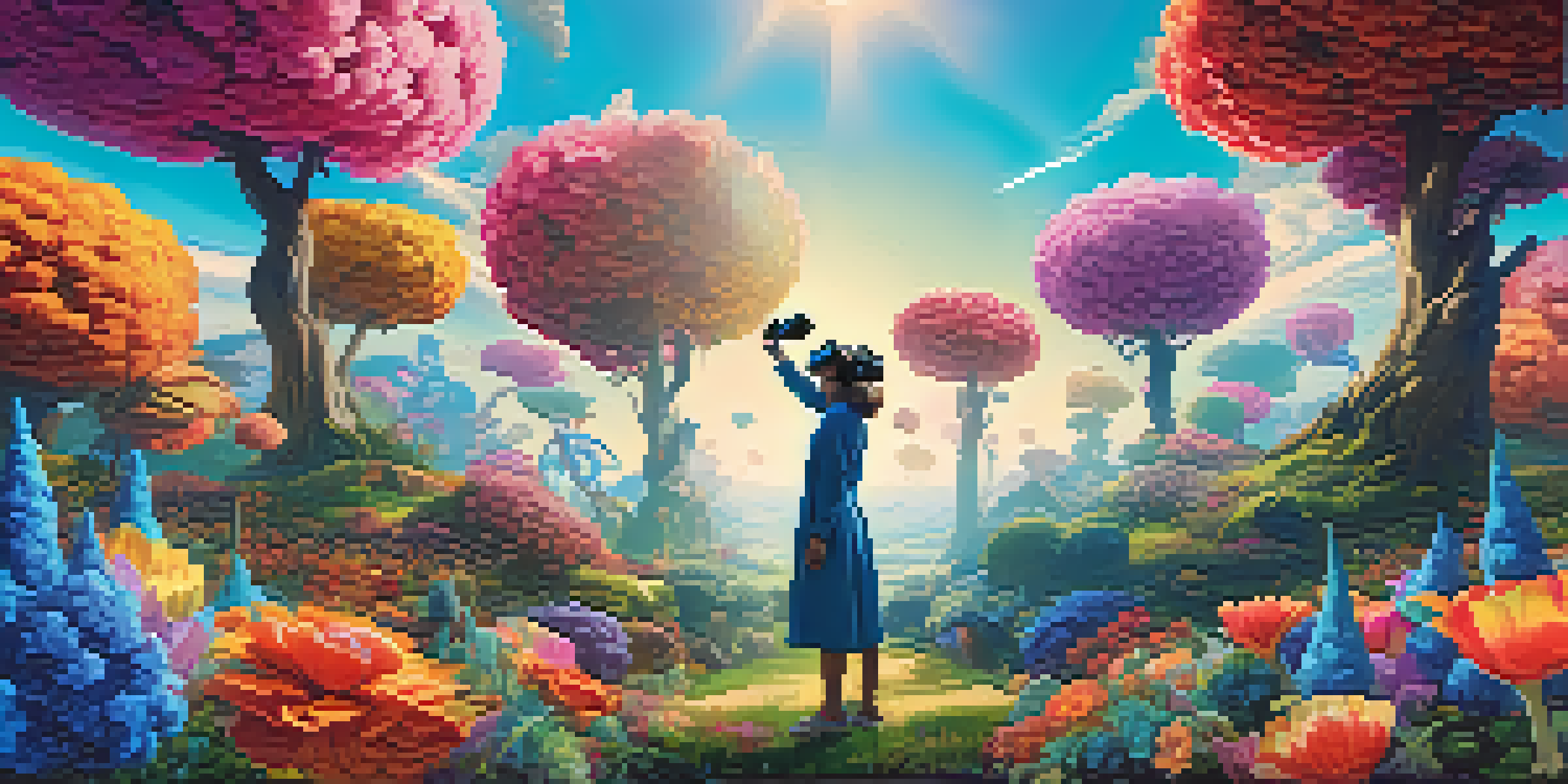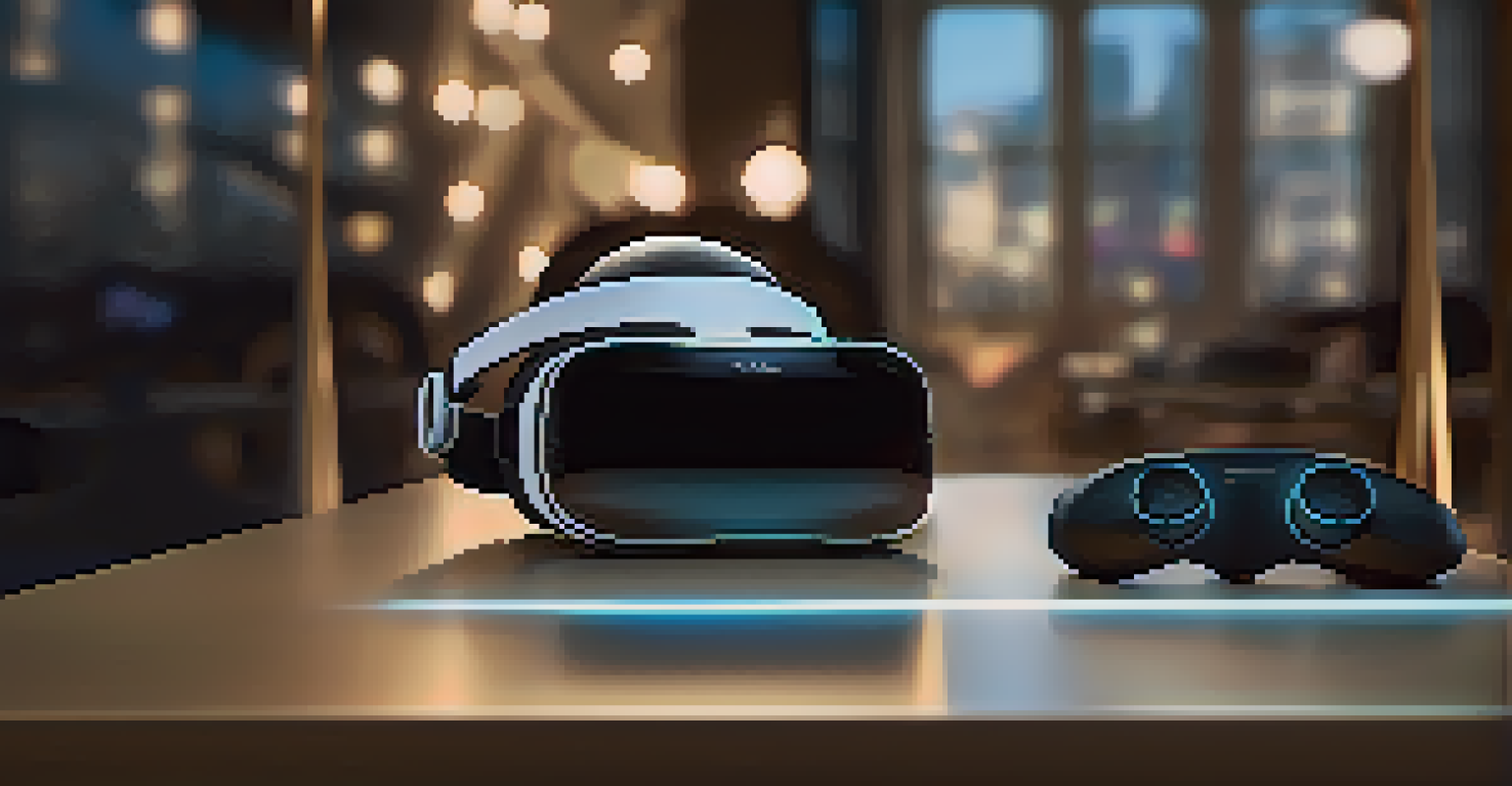Creating Immersive Art Installations with Virtual Reality

Understanding Virtual Reality in Art Installations
Virtual reality (VR) has transformed the way we experience art, allowing creators to craft fully immersive worlds. Unlike traditional installations that rely on physical space, VR transports viewers to entirely new environments, engaging them on a deeper level. By wearing VR headsets, audiences can not only observe but also interact with the artwork, creating a dynamic relationship between the viewer and the art.
Virtual reality is not just a tool for artists, but a new medium that allows them to express their creativity in ways that were previously unimaginable.
This shift opens up vast possibilities for artists, who can now explore concepts that were previously confined to imagination. For instance, an artist may recreate a historical event or a fantastical landscape that viewers can explore freely. This approach not only enhances storytelling but also invites participants to engage with the artwork in a personal and meaningful way.
Ultimately, understanding the role of VR in art installations invites us to rethink our perceptions of creativity and interaction. As technology advances, the boundaries of art continue to expand, encouraging artists to push their limits and challenge traditional norms.
The Creative Process Behind VR Art Installations
Creating a VR art installation begins with a strong conceptual foundation. Artists must think about the message they want to convey and how VR can enhance that narrative. This process often involves brainstorming ideas, sketching out scenes, and considering how audiences will interact with the virtual space.

Next comes the technical side of development, where artists collaborate with programmers and designers to bring their visions to life. This often includes designing 3D models, crafting animations, and integrating audio elements to create an immersive atmosphere. The fusion of artistic creativity and technical expertise is crucial to achieving a captivating experience.
VR Transforms Art Experiences
Virtual reality allows artists to create immersive environments that engage viewers on a deeper level through interaction and exploration.
Finally, testing the installation is vital to ensure that the user experience is intuitive and engaging. Artists often gather feedback during this phase, allowing them to refine the installation for better interaction. This iterative process not only hones the artwork but also emphasizes the collaborative nature of creating immersive experiences.
Choosing the Right Technology for Your Installation
Selecting the appropriate technology is key to bringing a VR art installation to life. Artists need to consider hardware options like VR headsets, which vary in terms of comfort, resolution, and compatibility with software. Popular choices include the Oculus Quest and HTC Vive, each offering unique features tailored to different artistic needs.
The future of art is not about the canvas anymore; it's about the experience itself.
Software is equally important, as it dictates the design and functionality of the VR experience. Platforms like Unity and Unreal Engine are popular among artists for their powerful tools and flexibility. These programs allow creators to build detailed environments and incorporate interactive elements that enhance viewer engagement.
By carefully choosing both hardware and software, artists can ensure that their installations are accessible and enjoyable for audiences. Thoughtful technology selection not only impacts the overall experience but also influences how well the artwork communicates its intended message.
Curating the Viewer Experience in VR Installations
Curating a VR installation involves more than just placing art in a virtual space; it’s about guiding the viewer’s journey through the experience. Artists must consider how users will navigate the environment, whether through teleportation, walking, or other interactive methods. This curation directly affects how the narrative unfolds and how deeply the viewer connects with the work.
Moreover, pacing is essential in creating an engaging experience. Artists can design their installations to allow viewers to explore at their own speed, or they can create guided paths that lead participants through critical moments of the artwork. Balancing freedom and direction helps maintain viewer interest while encouraging exploration.
Storytelling Enhances Engagement
Incorporating storytelling into VR installations transforms viewers into active participants, deepening their emotional connection to the art.
Finally, incorporating layers of interactivity, such as choices or actions that influence the experience, can significantly enhance engagement. By allowing viewers to shape their own journeys, artists create a deeper connection and a more memorable interaction with the art.
Incorporating Storytelling into VR Art Installations
Storytelling is a powerful tool in VR art installations, allowing artists to create immersive narratives that resonate with audiences. By weaving stories into the fabric of the experience, artists can evoke emotions, provoke thought, and engage viewers on a personal level. This narrative element transforms the viewer from a passive observer into an active participant in the art.
For example, an installation might guide viewers through a personal journey, where they encounter challenges and choices that mirror their own experiences. This connection not only makes the art more relatable but also encourages a deeper exploration of themes such as identity, loss, and transformation.
As viewers navigate through the virtual narrative, the interplay between storytelling and interactivity creates a unique experience that lingers long after the headset is removed. This fusion of art and narrative is what makes VR installations so compelling in today’s rapidly evolving art landscape.
Promoting Your VR Art Installation Effectively
Once the VR art installation is complete, promoting it effectively is essential for reaching audiences. Artists can leverage social media platforms to share teasers, behind-the-scenes content, and engagement opportunities. Creating buzz through platforms like Instagram or TikTok can attract attention and generate excitement around the installation.
Additionally, collaborating with influencers or art critics who understand the significance of VR can enhance credibility and visibility. Hosting virtual previews or interactive Q&A sessions allows artists to connect with potential audiences and create a sense of community around their work.
Technology Shapes Artistic Expression
The choice of hardware and software in VR art installations is crucial for crafting an accessible and impactful experience for audiences.
Finally, consider using traditional marketing methods, such as press releases and local art publications, to broaden your reach. Combining digital and traditional strategies ensures that your installation captures the attention of a diverse audience, maximizing its impact in the art community.
The Future of VR in Art Installations
The future of VR in art installations looks promising, with advancements in technology continuously reshaping the landscape. As VR becomes more accessible and user-friendly, more artists will be able to experiment with this medium, leading to innovative and diverse creations. This democratization of technology allows for a wider range of voices and perspectives in the art world.
Moreover, as audiences become more familiar with VR, their expectations and experiences will evolve. Artists will need to continually adapt and refine their approaches to meet these changing demands, pushing the boundaries of creativity and interaction. This dynamic relationship between technology and art ensures that the field remains exciting and relevant.

Ultimately, the future of VR art installations lies in the hands of visionary artists who are willing to explore new horizons. As they experiment with storytelling, interactivity, and immersive experiences, we can anticipate a rich tapestry of artistic expression that captivates and inspires audiences for years to come.